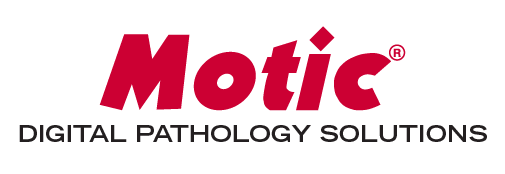The Digital Pathology Buyer’s Guide
 Going digital under pressure is hard. COVID-19 has forced every health institution in the country to consider adopting digital tools, both as a social distancing measure and a core productivity tool for these uncertain times. With elective procedures coming back, and case numbers again on the rise, it is more important than ever to digitize as many routine procedures as possible. However, the abrupt and unpredictable onset of this pandemic may mean that many organizations are only now considering digital tools seriously for the first time.
Going digital under pressure is hard. COVID-19 has forced every health institution in the country to consider adopting digital tools, both as a social distancing measure and a core productivity tool for these uncertain times. With elective procedures coming back, and case numbers again on the rise, it is more important than ever to digitize as many routine procedures as possible. However, the abrupt and unpredictable onset of this pandemic may mean that many organizations are only now considering digital tools seriously for the first time.
Whether you are a hospital looking for tele-productivity tools for your pathology department today, or a lab director surveying options for COVID-19 safety changes, it can be difficult to know where to begin. The abundance of digital pathology companies and solutions can be overwhelming, especially when pathology itself has so many distinct (and separate) workflows. While turnkey digital solutions do exist for some procedures, broad scope implementation will require validation, time, and significant monetary investment to roll out, even with the relaxed FDA and CLIA regulations clearing some hurdles for near-term implementation. Understanding the goals and what can be feasibly adopted now will help lead to decisions that can make an immediate, positive impact in your organization. With that said, here are some key questions we think are crucial to consider before starting your digital pathology journey!
What will you use it for? – This is arguably the most important question. Are you planning to use digital slides for routine sign out, or to eliminate offsite traveling for frozen sections? Perhaps there are ideas to use digital slides for specialty consults or to better facilitate your weekly tumor boards? Or maybe an international project is on hold due to travel restrictions, and cloud consultation seems a promising way to keep things going?
Each of these workflows has different requirements on the equipment you buy: routine sign outs would encourage centralized, high volume scanning at the main lab; but live imaging for frozen section or cytology adequacy would instead require having a smaller scanner on standby at each sampling site. Your dermatology slides might be scanned in under a minute at 20x, while your cytologists may need a multi-layer z-stack of an uncovered sample at 40x that takes half an hour to scan; queueing those slides on the same machine will be incredibly inefficient for everyone waiting.
Whatever the case may be, bring your workflow challenges to the vendors and see what they can do for you. In general, the better understanding a vendor has of your specific workflow, the more intuitive their solutions will be to use and adopt!
Keep in mind:
● What processes are you hoping to digitize?
● What type of slides are involved?
● There may be specialized tools for your workflow, don’t be shy to ask!
Where will the scanners be placed? – Where you intend to deploy the scanners will have a significant impact on the type of system to consider! Some applications, such as international consultations, may call for distributed deployments at multiple sites, while other use cases (such as archiving slides for research) may be more efficient using a single, high-volume system.
Additionally, finding a home for your WSI scanner may take some planning, as some devices may require stabilizing benches to operate optimally (Motic scanners do not). If you plan to move the scanner frequently between different rooms for on-demand access, having a dedicated cart for the procedure is also a good idea.
Keep in mind:
● Will you be placing scanners at one site, or many?
● What type of space will the device need?
Will it work for your current IT setup? – Digital slide files are very large; an average day of scanning for routine sign out can easily produce several terabytes of data. If your IT policy requires all data to be stored on-premise, then full-scale slide digitization may require an infrastructure overhaul at the hospital in order to handle the data volumes – this can cost millions of dollars and months of waiting for approvals.
Alternatively, some solutions can resolve the data issue by using live-imaging instead of scanning a digital slide, which gives pathologists remote access to slides without the data storage burden on IT; however, this solution may only work for certain procedures. Involving IT early on in the discovery process will allow you to better understand the technology requirements of the system, and to preempt deployment issues at your institution!
Keep in mind:
● Is your IT infrastructure equipped to handle the data load?
● Does your particular procedure require all digital slides to be stored?
How complicated is the installation? – Some scanners may require onsite installation and recalibration by a team of technicians, while others can be self-installed and will work out of the box. With COVID-19 travel restrictions in place, in-person installations may take longer to schedule for both your hospital and the vendor. While this is unlikely to be a problem in the long run, the urgency brought on by the pandemic makes installation and availability a significant factor when considering which solution can most immediately make a positive impact on your organization.
Keep in mind:
● How quickly can the solution be set up and running?
● Does it require scheduling an onsite installation?
What type of training and service is provided? – Robust onboarding, training, and customer support can make a huge difference in ensuring your organization’s success in adopting digital pathology. A good vendor-partner will ensure that the new workflow and tools are quickly integrated into your organization so you can see the impact right away. Some vendors may recommend comprehensive all-day training for your pathology team, while remote training will suffice in other cases, especially during the pandemic lockdowns. Regardless, a well-designed solution should be intuitive and easy to use, regardless of the training recommendations.
Most importantly, ask about service response time in COVID-19. If a unit requires sending a technician onsite to fix every issue, your lab may be without its scanner for days – if not weeks – should anything go wrong.
Keep in mind:
● What type of training does the vendor provide? Does it meet your needs?
● How quickly can your vendor respond to service issues?
Price – These days, you can purchase quality digital slide scanners from under $10,000 to several hundred thousand dollars per unit. However, the price does not necessarily indicate what applications a machine can address, or how quickly your institution can implement it to see an impact (or even how quickly you can start validation testing!). Even if their impact may not be obvious at first glance, each of the five areas above contributes secondary costs to implementation and therefore are absolutely crucial to understand. No one wants to have acquired a $250,000 scanner, only to have it collecting dust for six months because of an unforeseen infrastructure hold up!
Keep in mind:
● Make sure you consider all secondary costs of going digital when deciding on your intended use and budget. A good vendor-partner will be there to guide you through the implementation process to ensure your success.
About Motic Digital Pathology
Motic Digital Pathology addresses the growing global pathology care gap by making digital medicine approachable for hospitals, laboratories, and doctors everywhere. We promote adoption of telepathology through our innovative, cost-effective solutions developed directly in conjunction with partner pathologists. As the medical division of Motic, a leader in the field of optics since 1988, we are part of a global company innovating for a better tomorrow. Our whole slide scanning and image management systems have now been deployed for millions of cases worldwide, and our philanthropic initiatives leverage digital pathology technologies to solve today’s most pressing and under-resourced health problems.
We are committed to supporting the medical community through COVID-19 by empowering hospitals with digital tools to reduce unnecessary travel and risks while maintaining the same standard of care for patients. See how we can help your organization go digital here:
https://moticeasyscan.com/moticeasyscan-fs-live-covid-19/ .
Source: Motic Digital Pathology
































